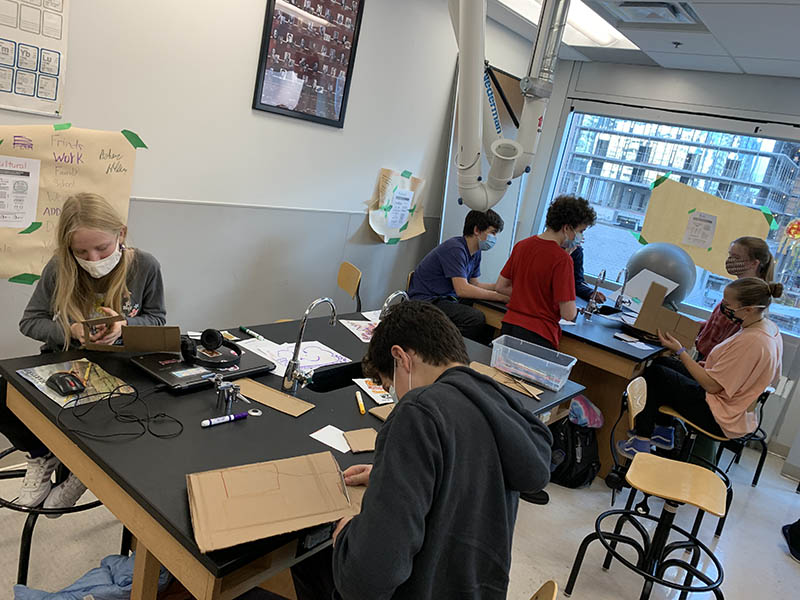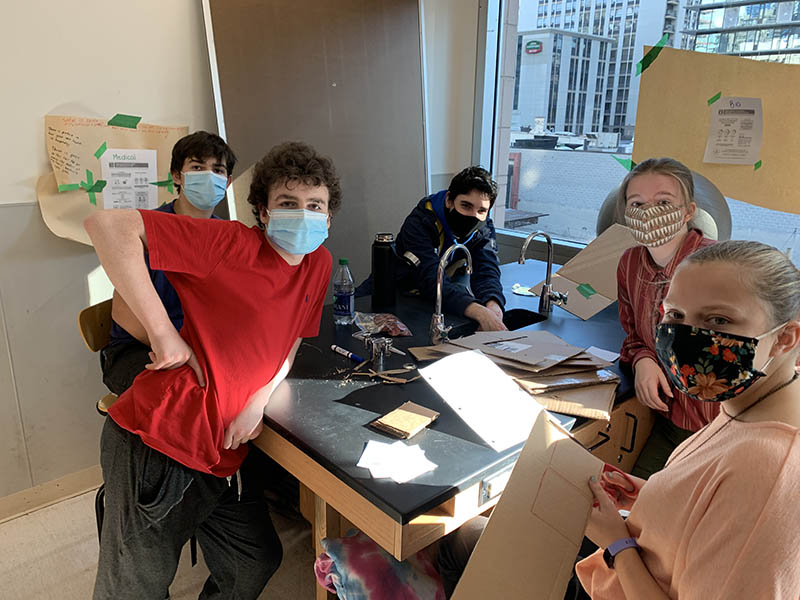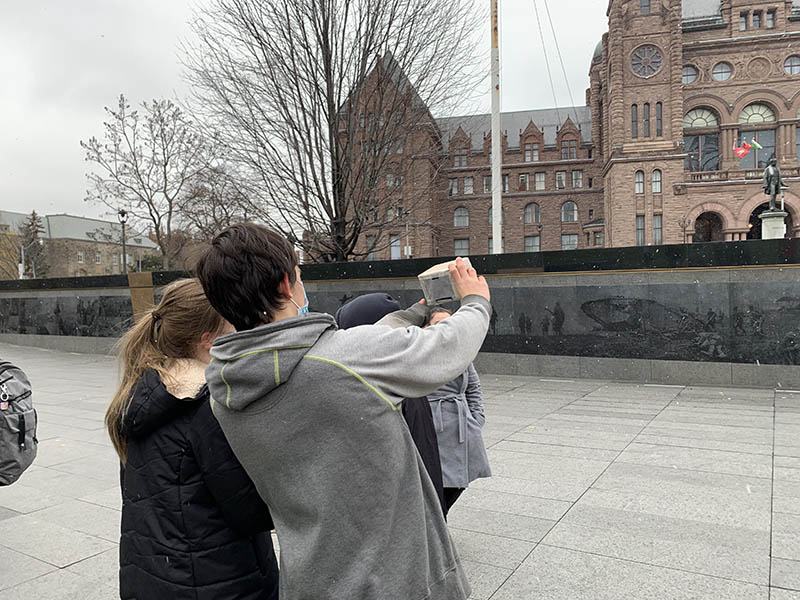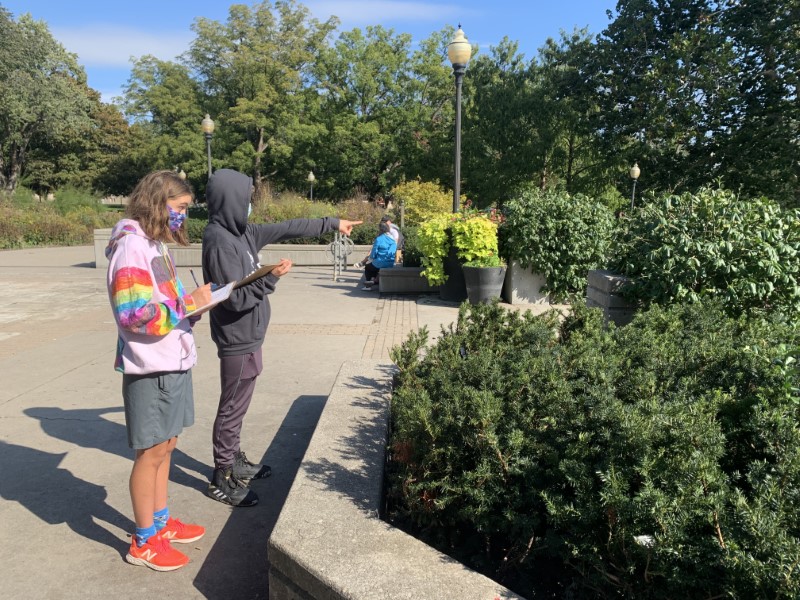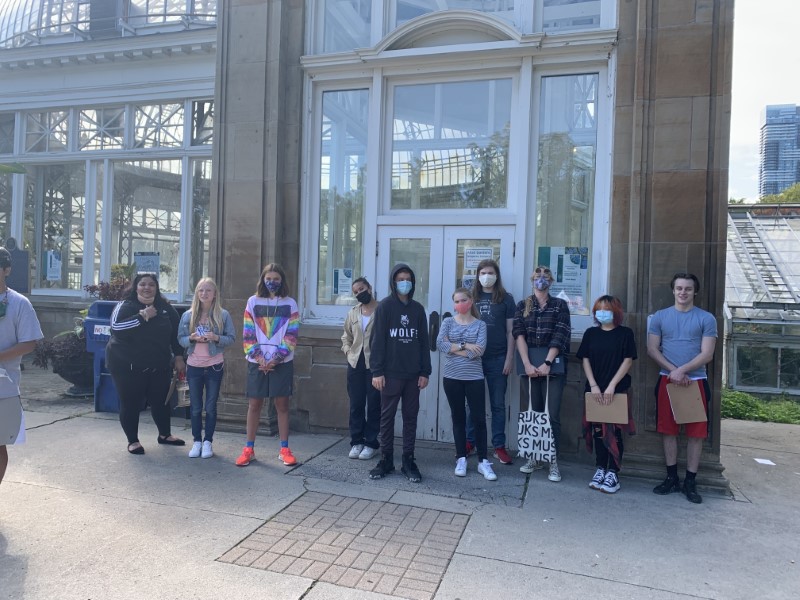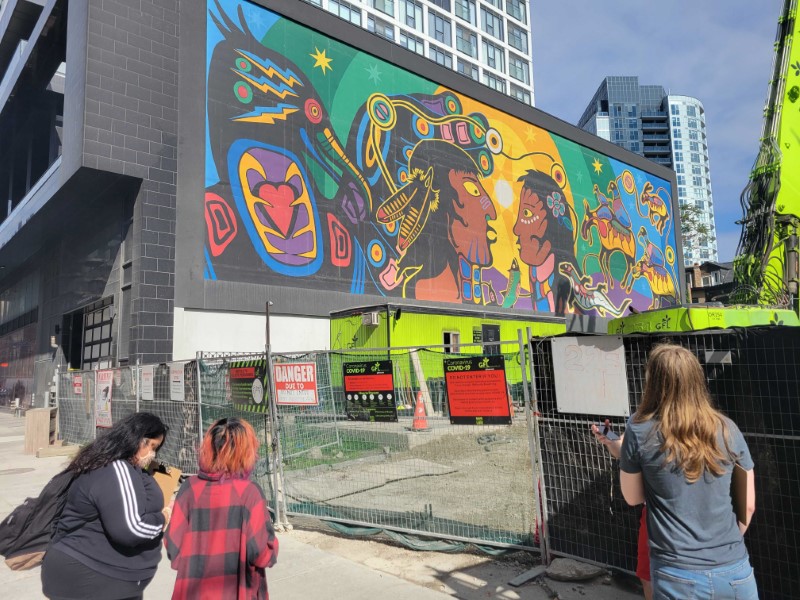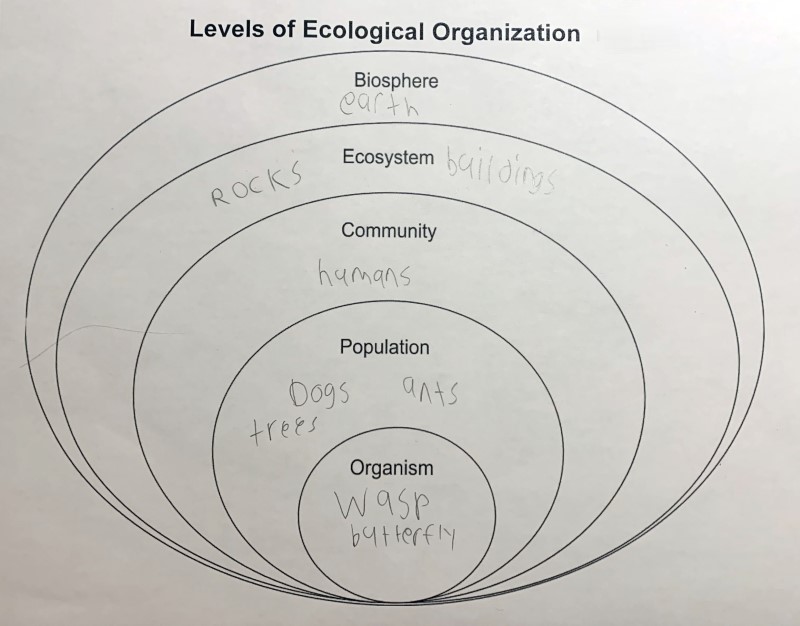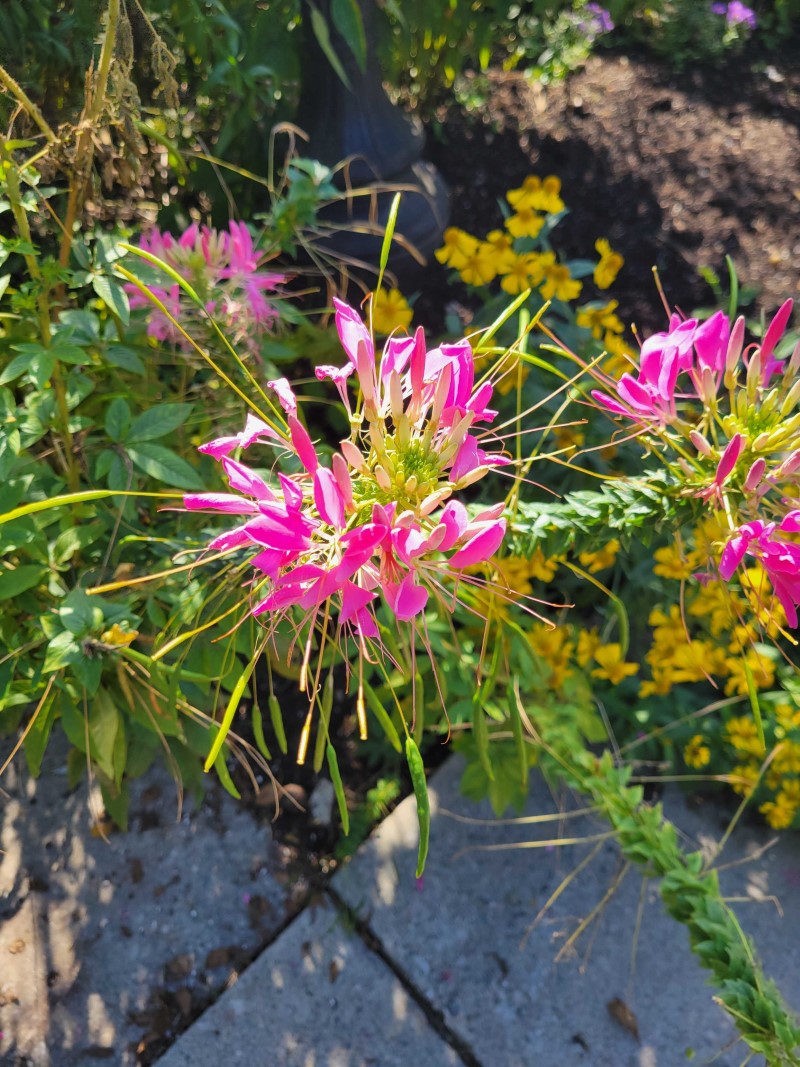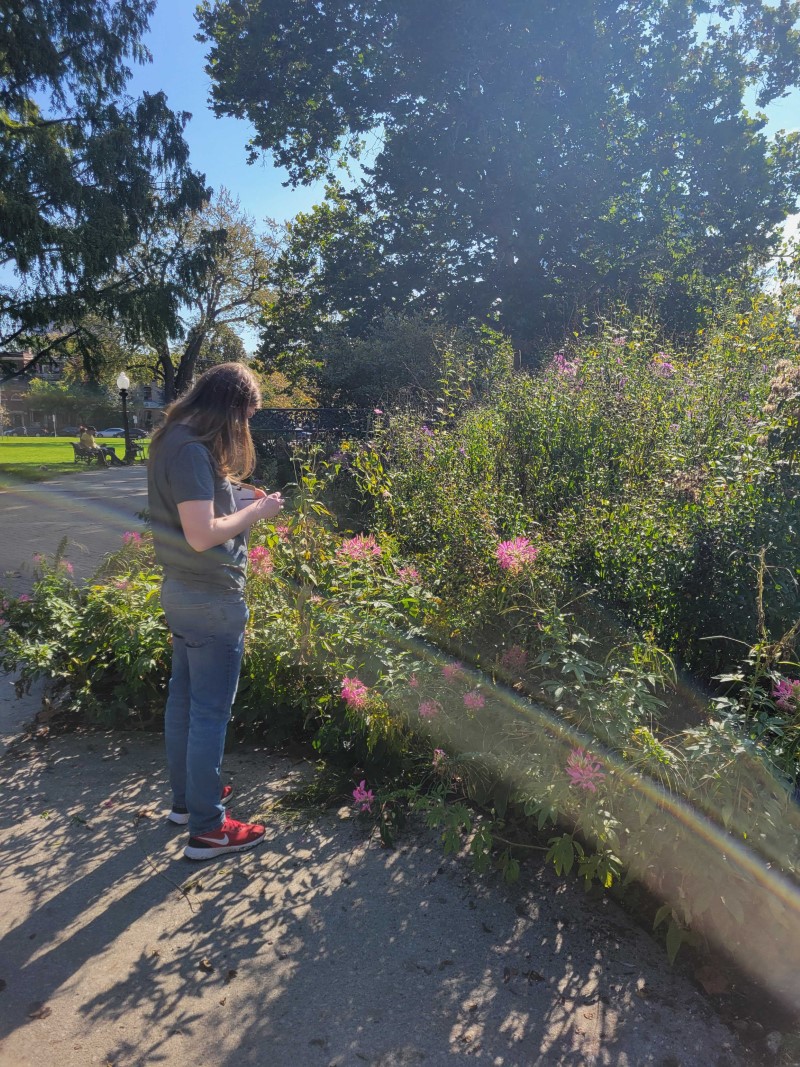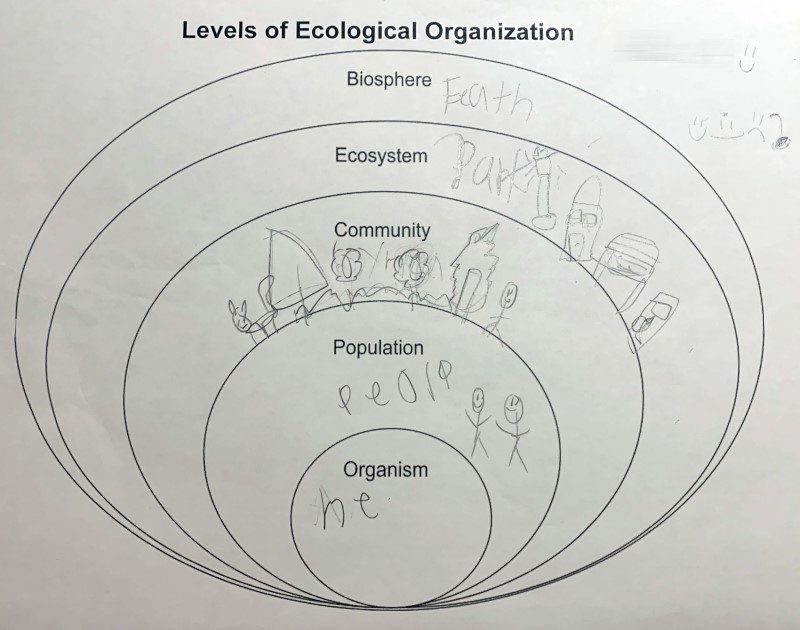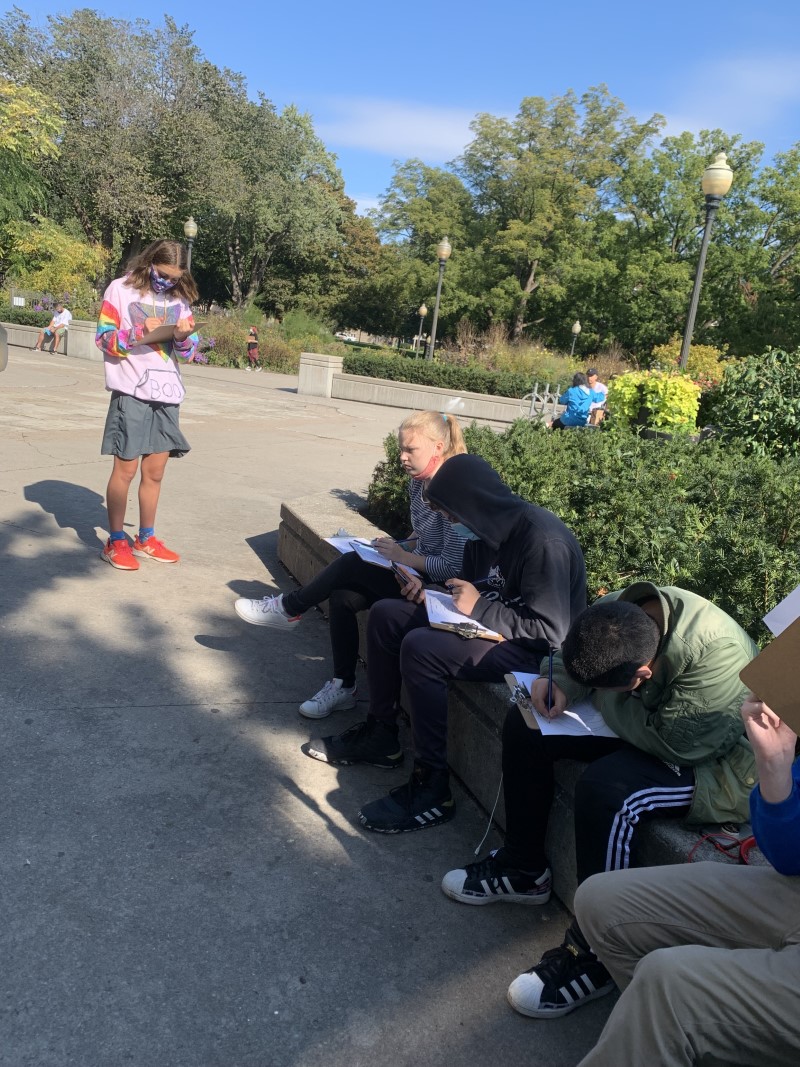To wrap up their placement at the YMCA Academy, Seneca College student Ambar Fadul Gonzalez recruited her peers Zach and Jenta to plan an epic “Raptor’s Day” for the Academy students! This day included fun activities such as designing a Toronto Raptors logo, slogan, or poster, and participating in “blindfolded basketball,” where the students used teamwork to help their classmates score a mini basket. Meanwhile, a small film crew was on site conducting interviews for their upcoming documentary about Toronto Raptors Fans!
These activities built anticipation for the beloved annual Students vs Staff basketball game which took place later that afternoon. It was an incredibly fun experience for the entire school, whether they were there to play, cheer, or watch! Students from both the middle school and high school participated, filling the court with spirit, effort, excitement, and teamwork! In addition to playing on the day, YMCA Academy student Nathan M. has provided an excellent account of how the game went:
TEACHERS BLOW STUDENTS OUT OF THE WATER IN ANNUAL BASKETBALL GAME – Nathan M.
Two weeks ago, the staff and students of the Y Academy took to the court to compete in the annual Students vs Staff basketball game. Midway through the afternoon, most of the school filed into the gym either to play or to cheer on the teams, assisted by college placement students.
The student team clearly came in without much of a game plan, as they quickly racked up turnover after turnover and missed shot after shot. Apart from inspiring defense by Nathan Moloney on Luka, and a few good moves by Zach and others, the students were hounded on both ends of the court. Indeed it was truly a struggle for the younger students. The game opened with a 12-2 run by the teachers before the students even got another basket.
Yet the student team was not to be held back, rallying amongst themselves to get a good run going. Taking pride in their attacks on the teachers, with a very lively bench getting the student team into the flow of things, they developed some momentum.
By the turn of the second half however, things had entered into “a match of D,” with both teams using defense more than the offensive end. Fighting tooth and nail, the students took a chance to launch a comeback.
Shots came aplenty yet baskets were hard to make. Ryan and Zach led the charge on that end, while the entire team fought hard on the other end. However it would not be quite so easy as Brandon and Katie began to take over the game, tearing up the D. Luka became a third titan of the court as the lineup went smaller on him, allowing him to grab the rebounds and nail easy layups on small ball defenders.
The students had to draft in outside help from a member of the Y, but it was too late in the game. The teachers’ three basketbrutes dealt a huge blow to the student team, leaving them buried around a mountain of dirt and basketballs.
The game did not even get a true ending, as the game had to be ended early due to time issues, leaving the teachers on top with just a little more left on the clock. Hopefully this leads to a better student attack next year for a rematch of the much anticipated annual basketball game.
Check out the rest the rest of the pictures on our Facebook page!


















